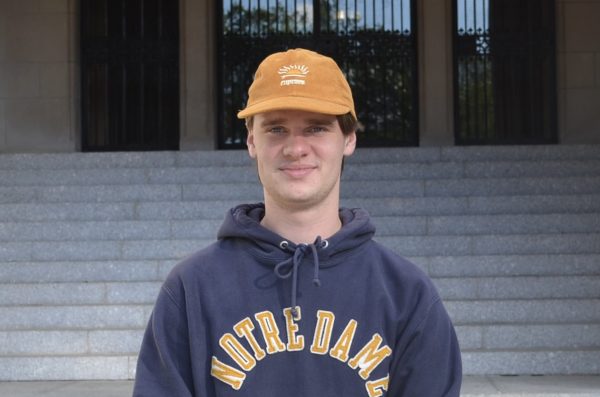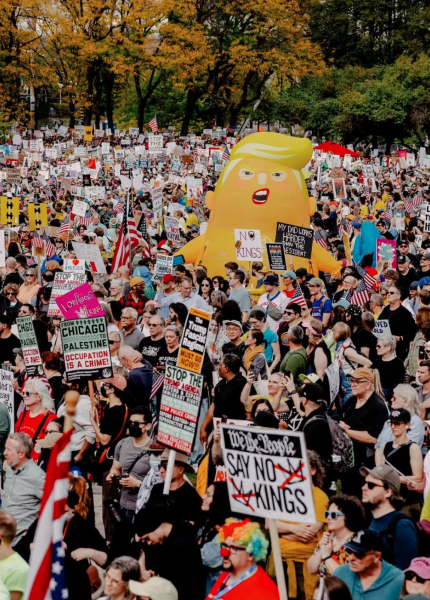Daylight Saving Time: To Be or Not To Be?
Contrary to what many believe, ‘time travel’ is possible. Of course, time can have various definitions, so for this article I will consider time as “measured in hours and minutes past midnight or noon.” If we accept this definition of time, then we “time travel” twice a year when we turn our clocks forward an hour in the spring and back an hour in the fall. In this sense time is essentially a social construct, and this is made increasingly apparent by daylight saving time (DST). Despite being what many might consider useless, this yearly manipulation of time measurement has been both a welcomed anticipation and feared realization.
By taking a deeper look into the history of DST, we can see how the usage of DST has changed drastically over time. Although the practice may no longer be necessary, it is a way of life that we have become accustomed to. Any attempts to change it will simply lead to chaos.
DST was officially implemented when Germans and Austrians made use of the concept during World War I in hopes of extending the hours of productivity in daylight. Within a few weeks, the United Kingdom, France and other countries implemented a time change, while the United States didn’t make the jump until they entered the war in 1918. The Chamber of Commerce heavily lobbied for this piece of legislation, known as the “Standard Time Act” and also established the five time zones we have today in America. After the war ended, many countries reverted back to “standard time,” while some allowed it to remain regionally like the United States did in New York City.
However, DST has been shown to have little effect on saving energy. Daylight saving time boils down to the concept of the natural environment and humans’ role within it. Our lives are based around keeping time, yet time is intangible. The measurement of time we have created based on the sun’s setting and rising but is never consistent or universal. The sun sets and rises at a different “time” every day based on one’s longitude and latitude and the time of the year. Furthermore, to consider implementing a universal standard of daylight savings time would disregard the fact that we all experience time differently.
In an industrial society, everything we do is based on our concept of the clock. However, agricultural societies are ruled by daylight which naturally changes during the year based on location.
It is also worth considering whether more hours of daylight are something everyone would want. Arizona doesn’t use daylight saving time because the extra hour of daylight means another hour of unbearable heat in the summer months. In Hawaii and along the equator, DST is not implemented because they experience slight variation in sun rising and setting times during the year. In Alaska, they experience more drastic seasonal changes, so the clock’s manipulation has little effect.
Daylight saving time was not something rural communities rallied for; many farmers refused to observe the change, leading to a lot of confusion prior to the accepted change in 1966. The clock change confused the livestock, so the process of milking and tending to cows and livestock was disrupted.
The uniformization of time has been implemented in the last two centuries as the world has become increasingly globalized and industrialized. A product of this interconnected, capitalist world is a sense of cohesion, but that often indicates a disregard for places that don’t need the system. Asia and Africa, for example, do not observe daylight saving.
Since 1915, the biggest lobby of daylight saving in the United States has been the Chamber of Commerce, which played a role in creating the time zones through the Interstate Commerce Commission. They thought that workers would be more likely to stop and shop if they had daylight on their way home from work. Certain industries also claimed that an extra month of daylight savings is worth hundreds of millions of dollars in profits.
Many states have been trying to abolish resetting the clocks in the last decade. Nineteen states want to implement a yearly daylight saving change, and 29 states have introduced legislation to repeal the changing of the clocks. The concern that remains is if regions and neighboring states do not implement the same change in time, it might cause disruptions in travel and exports and imports of goods.
Coming up with a universal standard for time, whether it be every state reverting to standard time, adopting a year-round daylight savings time or continuing with the system we have now, will be met with controversy.
Turning the clocks forward in spring serves as an indicator of the warmer and longer days that are coming. A light at the end of a period of cold darkness, the changing of the clocks has contributed to my view of the world as a place of impermanence. The change in time during the seasons is all I have known, and I can’t imagine a world without it.
Growing up with daylight saving time means realizing that we are a people trying to cope with a natural environment in an unnatural way. To understand the history of daylight saving time is to understand that it is a choice. We put restraints on our time by classifying it with numbers. Yet, I can’t imagine any other way of life.
Time is unique to all of us, and time is what we want it to be. We can take daylight saving for what it is: a manifestation of our lives being dictated by measurement as we move toward a definite end. Or we can see it as a perversion, a reminder that we ultimately decide what we do with our time and what it means to us, not a clock or the government. The clock changes in the fall and spring, and an hour appears or disappears, but we always remain the same.
Bianca Parrinello, FCRH ’23, is a history and political science major from Queens, N.Y.








































































































































































































